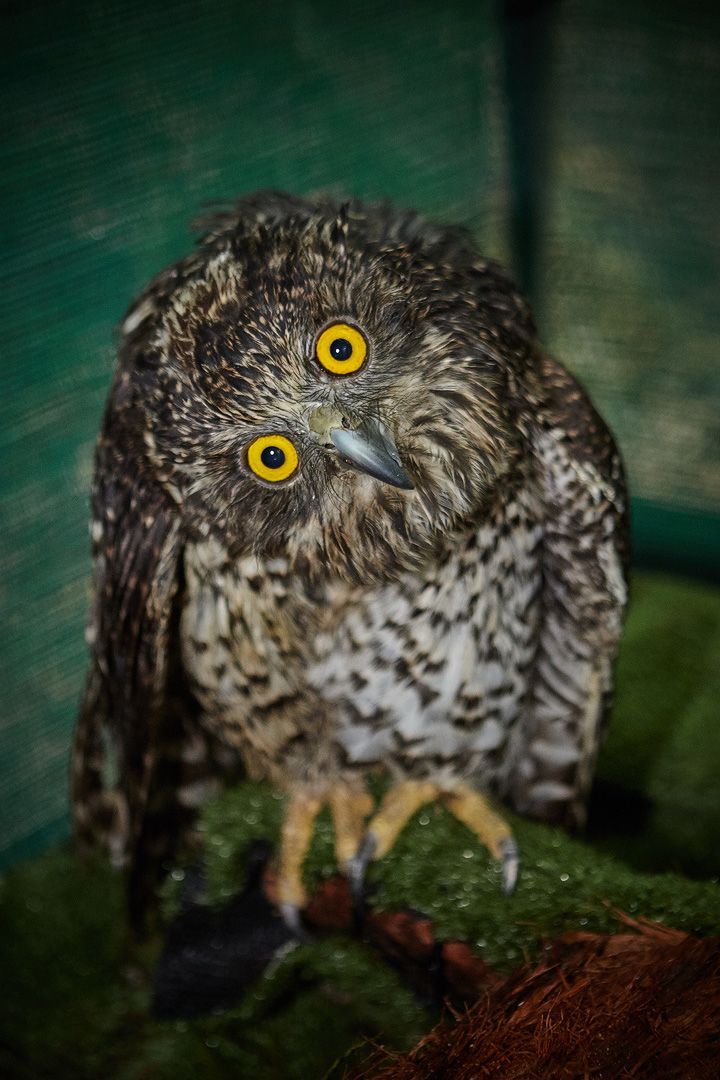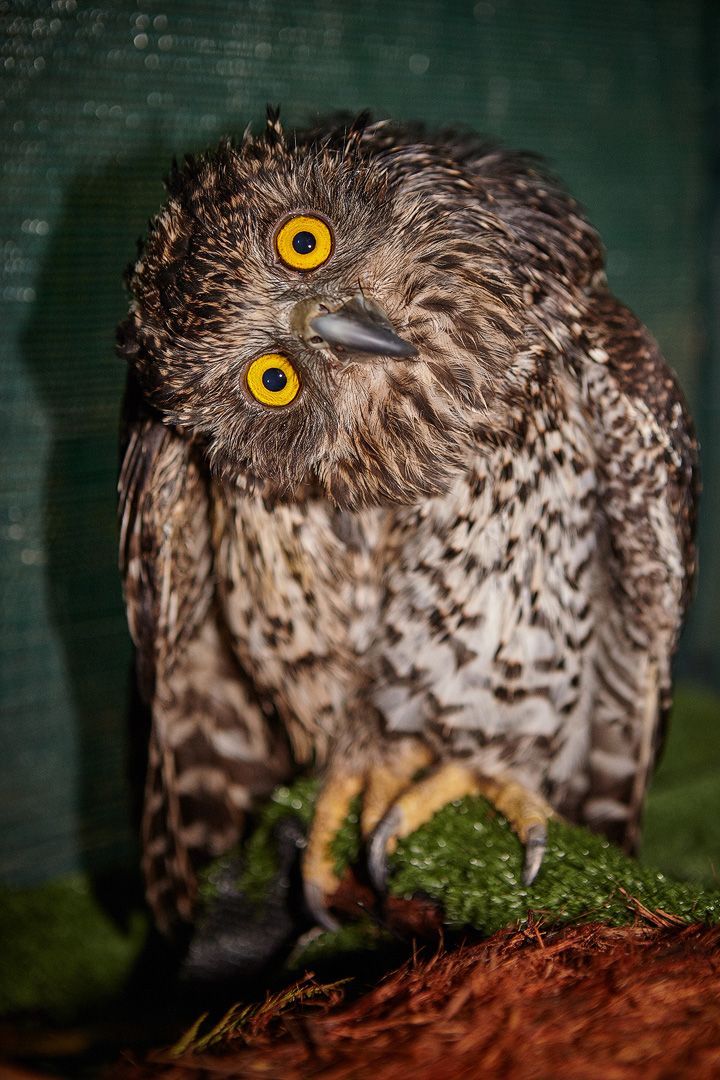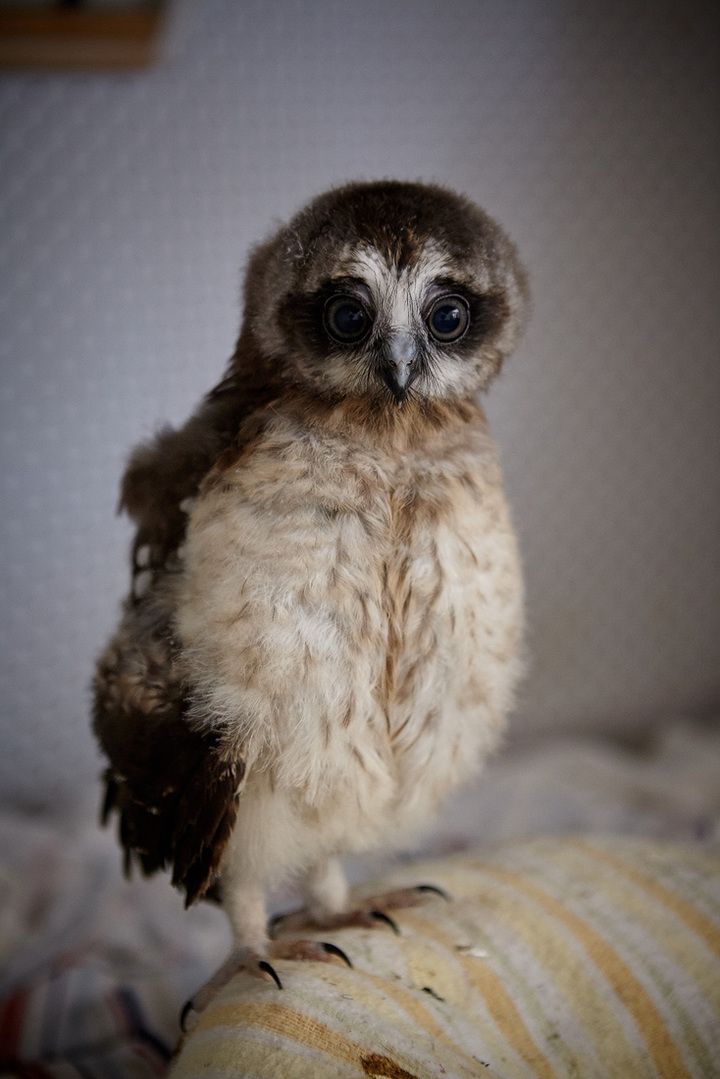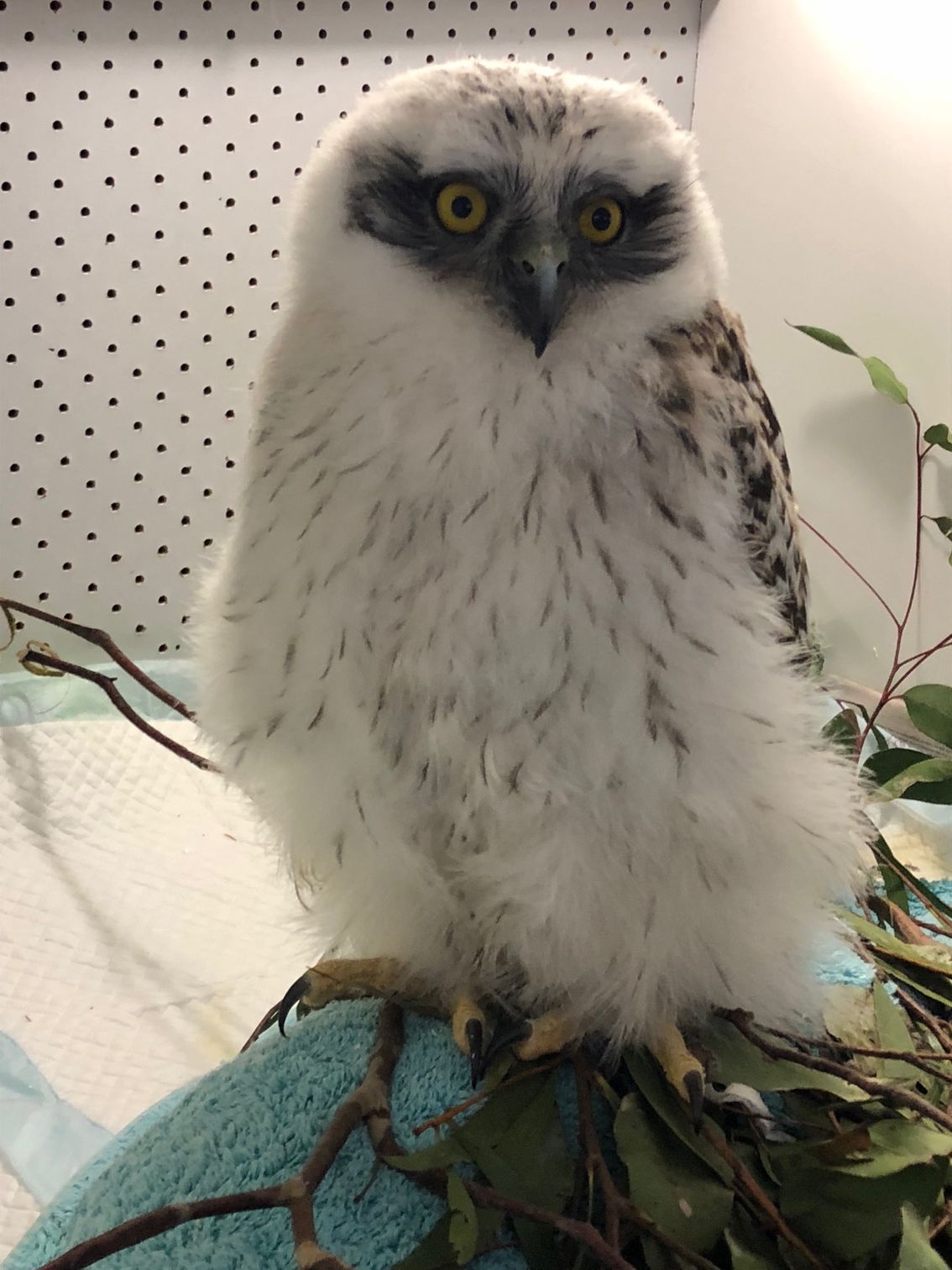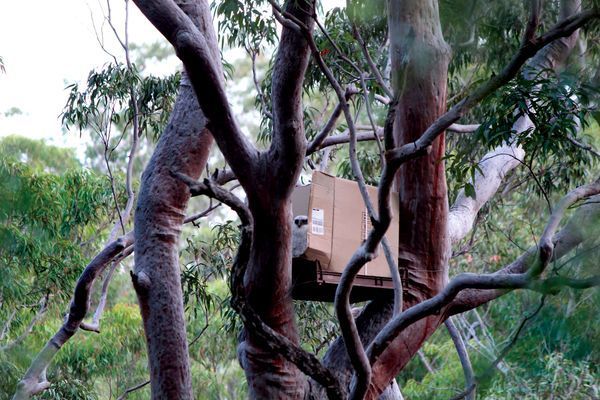THREATS AND
CONSERVATION
Rehabilitation cases highlighting the threats to
Australian raptors.
Photographer: Matt Wright
LOGGING and TREE FELLING
As for many wild species the world over, loss of habitat is an enormous threat to populations of raptors, whose ranges often cover large areas. Nesting and foraging habitat disturbance, degradation or destruction threatens most raptors in Australia, due to a variety of human-made causes. Unfortunately environmental protection laws are failing threatened species, with inadequate funding for conservation.
This Powerful owl was found beneath a partially felled old growth tree. She presented with severe neurological signs consistent with head and spinal trauma, and was unable to hold her head in a normal position.
As this bird was an adult female, it is likely that she was nesting at the time the tree was felled. With time and appropriate medical treatment, she made gradual but continual improvement.
Photographer: Peg McDonald
These Australian Boobook owl chicks were all victims of logging on the NSW South Coast. Their nests were destroyed by clear felling, and they were brought into human care.
All were released back to the wild during the normal dispersal season for this species, after displaying competent hunting abilities and undergoing pre-release flight conditioning.
Photographer: Peg McDonald
Clearing or removal of trees with hollows reduces the nesting opportunities for owls who rely on the hollows to bring their chicks into the world. Large and deep hollows – as required for masked owls – take hundreds of years to form in old trees. Therefore, the destruction of old trees results in loss of nesting habitat and decline of species who rely on them. The remaining trees are then overused and the chances of inter-species conflict and disease transfer is increased. Providing nest boxes is one way of increasing nesting habitat.
This youngster was found on the ground under her nest tree by Michael Bianchino, a citizen scientist, photographer, environmental activist and Powerful owl advocate. The forest around the nest tree had been clear-felled, and the human activity and noise so close to the nest had caused the youngster to attempt escape, putting herself in danger. She sustained some soft tissue injury but showed signs of recovering well after only a week in care. Advice from both Michael and Dr Beth Mott of the Birdlife Australia Powerful Owl Project was that the chick’s parents were trilling in search of her, and would accept her back if reunited. She would also not be fully fledged for another couple of weeks, and so would be able to complete her recovery either in the nest or on a nearby branch before attempting to fly. A makeshift nest was installed by a tree-climber, and after one week in care, the chick was immediately accepted back and fed by a parent. Michael was able to follow this chick for several months afterwards, until she dispersed from the natal area.
Thanks to close collaboration between rehabilitator, environmentalist and ecologist, this bird was able to return back to the wild after one week and be raised by her own kind, rather than spend many months under human care.
Photographer: Michael Bianchino
This Powerful owl chick came into care unfortunately without the essential detailed information needed to attempt reunification with the parents or nest site. Therefore, many months in care were needed to ensure the chick developed the flight and hunting skills necessary for successful reintegration into the wild. She was released at normal dispersal time in her natal area.
Photographer: Peg McDonald (left), Mark Kelly (right)
HOW CAN YOU HELP?
Protect old growth forests by reducing or eliminating the use of paper products where possible. If paper-based products are unavoidable, then use those which utilise and have a high level of recycled paper content. Plantation timber or bamboo products are another alternative. Look at the labelling and ensure you understand what the different the logos and certifications mean in your state or country.
Recycle paper product where possible, and get involved where you can with community and lobby groups to encourage support for forest protection at local, state and government levels.
On a local scale, ensure trees around your home and neighbourhood are assessed for use by local wildlife, and checked for roosts and nests before being trimmed or cut down.
In the spirit of reconciliation, Australian Raptor Care and Conservation Inc acknowledges the Traditional Custodians of country throughout Australia and their connections to land, sea and community. We pay our respect to their Elders past and present and extend that respect to all Aboriginal and Torres Strait Islander peoples today. We recognise and appreciate the traditional significance and cultural roles birds of prey play in the lives of our First Nations people.




